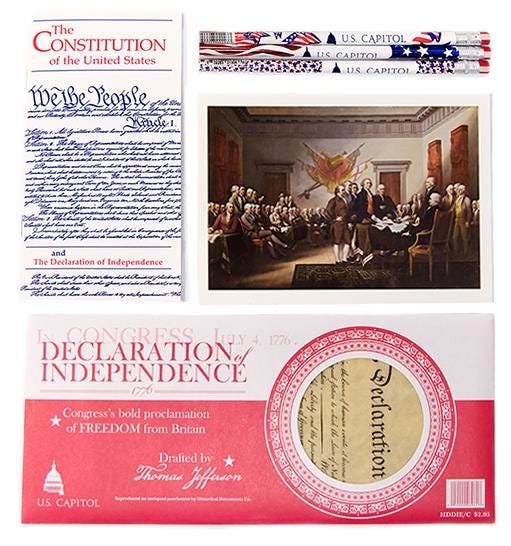#78: CIVICS 101: The Legislative Branch
Q&A #78: Are visitors allowed to listen to the proceedings of Congress?
Our American Government
Our American Government is a small book published by the House of Representatives for citizens and those who seek a greater understanding of the American interpretation of democracy. It follows a question-and-answer format and covers a broad range of topics dealing with the three branches of our Government, the electoral process, and the role of political parties.
The Savvy Citizen is reproducing the 169 questions-and-answers through a series of posts called Civics 101. Each post will contain the Q&A as well as some additional commentary to add historical context, fun facts, or anything we believe will add to our collective understanding of these topics.
Think of it as your adult Civics class but without the test!
Let’s keep at it.
SECTION: The Legislative Branch: The Congress
Congressional Rules and Procedures
Q&A #78: Are visitors allowed to listen to the proceedings of Congress?
Visitors are allowed to listen to and watch the proceedings of the House and Senate from visitors’ galleries in each House. Tour guides bring groups of visitors briefly into the House and Senate galleries. Visitors who wish to observe House and Senate floor sessions for longer periods of time without interruption must obtain gallery passes, available without prior notice in the offices of their Senator or Representative.
All visitors must abide by certain rules and maintain proper decorum. They are not allowed to take radios, cameras, or umbrellas [including cell phones] into either Chamber and they may not read, write, or take notes while inside. Visitors in the galleries are subject to control and supervision by the Presiding Officers of the House and Senate as well as doorkeepers stationed beside each entrance to the galleries. Unless there is a rare closed meeting of either House, visitors are allowed whenever Congress is in session.
Most committee hearings and meetings are also open to the public. Committees generally meet in rooms set aside for their use in the congressional office buildings and no visitors’ passes are required, although audience space may be limited to accommodate congressional staff, executive branch officials, and journalists.
Under certain circumstances specified in House and Senate Rules, committees may vote to close hearings or meetings to the public. Special space is available in the galleries for accredited journalists, who are not subject to the prohibition on writing and taking notes. Since 1979, proceedings of the House have been accessible to the news media for television or radio broadcast. Senate sessions have been available for television and radio broadcast since 1986. Any committee hearing or meeting open to the public can also be broadcast on radio or television, subject to administrative control by the individual committee.
My Thoughts
If you’ve never watched Congress in session, add it to your bucket list. It’s an extremely powerful experience, regardless of the number of lawmakers on the floor or the subject matters being discussed. The U.S. Capitol is the heartbeat of our republic! To learn more about watching Congress in session, check out the U.S. Capitol Visitor Center’s website here.
For a current list of prohibited items in the House and Senate galleries, visit the U.S. Capitol Police’s website here.
Back next time with a new section, The Committee System, and new Q&A #79: Has Congress ever altered its committee organization?
Meanwhile, don’t forget that we’re organizing the post links on a single page available here.
xo,
Kelley for the Savvy Citizen Team
April 11, 2025




